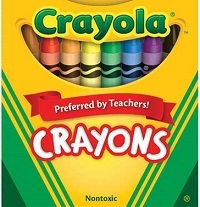Night colour vision?
Someone can have trouble with detecting colour where the object has a very small angular distance. Ie light very far in the distance. But no trouble with a larger object because the larger object hiits more cones. The visual cortex can use this larger sample of information to get the correct result
When I did my difference training for the glass cockpit, a while ago now, no one even asked if I could see the PFD or MFD let alone the colours on it.
Glass cockpits tend to have standrad colors for modes on normal & emergencies (still I have signed a guy to fly DA40 G1000 as he had no issues with lack of colors on the displays but I don’t think he can fly N-VFR/N-IFR on it due to his medical restriction)
Almost nobody is completely colourblind.
First year university, 1958, the first time I got the Ishihara cards test.
Required for chemistry course.
It surprises me that this is an issue. It should be relatively simple to make displays that colourblind people can interpret safely. Changing all the navigation lights in the world would be a much bigger task.
The answer is probably in a few parts:

So, as usual in GA, one thing narrows it after another and soon there are so examples left, so nobody finds out 
kwlf wrote:
It should be relatively simple to make displays that colourblind people can interpret safely.
The challenge is, that you can not really create colored displays that colorblind people can read safely – because b/w renderings of colors always depend on the lighting conditions.
So (grossly oversimplifying to make the point) you have the choice of either create b/w displays that can be interpreted also by the color blind but lack the strong discriminatory value of red or yellow to the majority of the population or you use such colors at the risk that color blind can not differentiate.
Talking of flat panel displays here, for largely single pilot operation… Everything can be changed at the click of a button. I’m not sure that I entirely understand your point re. lighting conditions, which can be a problem for any user of a self-luminous display.
The page here, as an example, shows how websites can be designed to improve accessibility. I find it interesting to consider that the third text combination (yellow on red) might actually be more accessible for a protanope. It seems a real shame if newer aircraft have more accessibility issues than older aircraft with steam gauges and warning lights.
Malibuflyer wrote:
Ancient Greek not even having a word in their language to differentiate between blue and green
Hence Homer’s wine-dark sea. Greek didn’t have colours in an absolute or abstract sense; an object we might call light brown would be ‘leather-like’ or like ‘honeyed’. I think it also used the same idea for texture, so ivory might mean glossy instead of white. This is distinct from metaphorical use of colour, which adds more meaning
Interesting how this

completely affects affects one’s perception of the world.